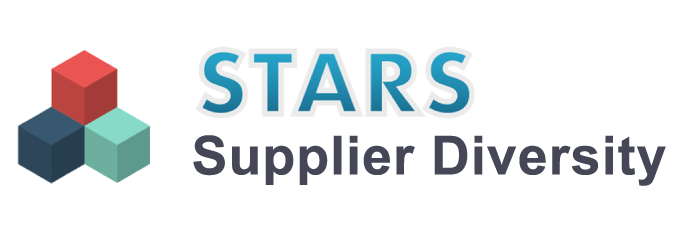10 Best Practices for Implementing a Supplier Diversity Program – Phase I

Introduction
In 1969, a Presidential Executive Order catalyzed the concept of supplier diversity programs. These programs aim to integrate diverse suppliers—businesses predominantly owned and managed by historically marginalized groups such as minorities, LGBTQIA+ individuals, veterans, and those with disabilities—into organizational purchasing strategies.
Solid evidence underscores the benefits of well-executed supplier diversity programs. A McKinsey study highlights that a $50 billion investment in minority-owned businesses could catalyze four million jobs and generate an additional $280 billion in revenue. By leveraging these programs, businesses can drive innovation, broaden market access, and create societal value.
The STARS Approach
At STARS, we emphasize a structured, two-phased approach for successful supplier diversity implementation:
- Phase I: Laying the foundation, which involves defining the program, securing leadership buy-in, and setting policies.
- Phase II: Ensuring sustainability through continuous monitoring, feedback, and adaptation to evolving business dynamics.
The Transformative Impact of Supplier Diversity
Before delving into best practices, it’s important to recognize the transformative benefits of supplier diversity:
- Economic Growth: Investing in diverse suppliers fosters job creation and economic stability. A 2023 report showed that every $1 spent on diverse suppliers generates $1.72 in local economic activity.
- Innovation Boost: Diverse suppliers bring fresh perspectives, often leading to innovative product and service enhancements.
- New Market Opportunities: Diverse suppliers’ insights can help companies tap into previously unexplored demographics, creating new revenue streams.
10 Best Practices for Phase I Implementation
- Secure Leadership Commitment Leadership buy-in is critical. Engaged leaders provide the necessary resources and set the tone for a company-wide culture of diversity.
Example: Apple’s Supplier Diversity Program thrives under CEO Tim Cook’s active endorsement, ensuring adequate funding and prioritization. - Appoint a Dedicated Program Leader A senior manager should oversee the program to ensure alignment with business objectives and streamline operations.
Example: Google’s Supplier Diversity Program, led by a dedicated director, has introduced supplier summits to foster engagement. - Develop a Comprehensive Policy A well-defined policy outlines the program’s mission, criteria for diverse suppliers, and engagement processes. It ensures consistency and transparency.
Example: IBM’s supplier diversity policy explicitly commits to equitable opportunities and clear engagement expectations. - Establish Baseline Spend Data Analyzing current supplier spend provides a benchmark for setting realistic goals and measuring progress.
Example: Procter & Gamble’s initial spend analysis highlighted gaps, prompting targeted initiatives to increase partnerships with women-owned businesses. - Leverage Advanced Technology Automating supplier diversity processes improves accuracy and efficiency. Analytics tools can provide real-time insights into program performance.
Example: Ford uses integrated supplier diversity platforms to streamline tracking and reporting. - Create Specialized Reporting Mechanisms Regular reports offer insights into the program’s effectiveness, highlighting areas for improvement.
Example: Coca-Cola’s reporting revealed gaps in engaging LGBTQIA+ suppliers, leading to targeted outreach campaigns. - Educate Employees and Vendors Workshops and training sessions ensure that internal teams and external vendors understand the program’s goals and their roles in its success.
Example: Walmart conducts regular procurement workshops to train teams on onboarding diverse suppliers. - Launch a Tier 2 Program Expanding focus to Tier 2 suppliers amplifies the impact of supplier diversity by engaging subcontractors.
Example: Boeing tracks Tier 2 spend through its prime contractors, enhancing supply chain diversity. - Institute Best Practices and Set Goals Aligning with industry best practices ensures competitiveness. Setting clear KPIs ensures progress is measurable.
Example: Dell’s KPIs for its supplier diversity program include annual spend targets and supplier development metrics. - Foster Open Communication and Gather Feedback Regular engagement with stakeholders ensures continuous program improvement.
Example: General Electric’s feedback sessions with suppliers have led to innovative program adjustments.
Why Supplier Diversity Programs Are Essential
A comprehensive supplier diversity program extends beyond ethical obligations, delivering measurable business benefits:
- Commercial Benefits: Improved competition and innovation lead to higher-quality products and services at competitive prices.
- Community Impact: Promoting diversity fosters goodwill and drives socio-economic upliftment.
Conclusion
A well-implemented supplier diversity program is a transformative force. By securing leadership commitment, leveraging technology, educating stakeholders, and fostering continuous improvement, businesses can lay a strong foundation for long-term success. Phase I is the cornerstone that supports Phase II’s sustainability, ensuring that supplier diversity becomes an integral part of the organization’s DNA.
Supplier Diversity Solutions by STARS
At STARS, we specialize in empowering businesses to build impactful supplier diversity programs. Our comprehensive platform integrates analytics, automation, and engagement tools, ensuring seamless implementation and measurable outcomes. Let us help you make diversity a cornerstone of your supply chain strategy.

